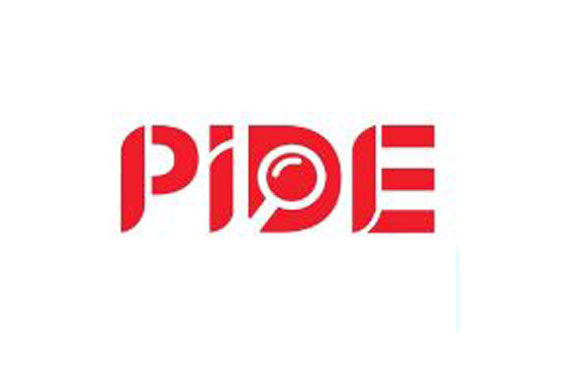· A huge 98.5% of the respondents had parents who were linguistically homogeneous.
· Only 1.5% of the marriages in Pakistan are ethnically exogamous.
· The trend for intra-ethnic marriage is very strong in Pakistan
Islamabad, JUN 25: /DNA/ – PIDE new research highlighted the significance of inter-ethnic marriages in Pakistan, a country with a diverse ethnic spectrum. The research findings from the PIDE BASICS 1 survey indicate that such marriages play a crucial role in promoting assimilation, social cohesion, and stability, thereby blurring tensions arising from ethnic differences. Language, closely tied to ethnic background, has a profound impact on personal identities, which can sometimes be divisive and undermine unity within the larger identity. The survey employed a new approach to measure ethnic exogamy and homogamy by asking respondents three questions related to the ethnic backgrounds of their parents and the language spoken in their everyday lives. The results revealed that only a small proportion (1.5%) of marriages in Pakistan are ethnically exogamous, indicating a strong trend of intra-ethnic marriages. However, slight variations exist among different languages, with Urdu, Potohari, Brahui, and Brushaski showing slightly higher rates of exogamy. Additionally, gender differences were observed in languages such as Urdu, Shina, and Kashmiri. The study also examined the language preferences of children in families with different ethnic backgrounds and found that when parents share the same ethnicity, 92.3% of children spoke the same language as their parents. However, children of exogamous parents exhibited a mixed pattern, with some languages influenced more by the mother’s language and others by the father’s language. These findings shed light on the role of inter-ethnic marriages and language dynamics in Pakistan’s social fabric.
According to a press release issued from the Pakistan Institute of Development Economics (PIDE), Pro Vice-Chancellor Dr. Durre Nayab said while describing the details of the PIDE BASICS Notes 8 that the latest research findings revealed that to capture the prevalence of ethnic exogamy, or homogamy, in Pakistan, the PIDE BASICS 1 survey asked questions in a new way to give a better insight into the issue. In most surveys, language is captured by asking the respondents about the language they speak, and the response to this question is taken as representing their ethnic background. This is misleading, and the results of the BASICS survey confirm this distortion in interpretation.
She said that the new survey asked three questions to gauge the ethnic backgrounds of the respondents and the language spoken by them. The questions were: ‘What is the mother tongue of your father? ‘– to determine the ethnic background of the respondent’s father; ‘What is the mother tongue of your mother?’ – to determine the ethnic background of the respondent’s mother; and ‘What is the language you use in your everyday life?’ – to capture the language of communication used by the respondent.
According to the latest research by the PIDE, Dr. Nayab added that by asking the three questions mentioned earlier, we see that only a small proportion of cross-ethnic marriages occur in Pakistan, as both spouses have the same mother tongue. A huge 98.5% of the respondents had parents who were linguistically homogeneous.
PIDE Pro VC said that in her latest PIDE Notes 8 that looking at the trends of language homogamy and exogamy by region, province, age, education, and income, we see in the findings of the study that only 1.5% of the marriages in Pakistan are ethnically exogamous. Ethnic exogamy is more prevalent in urban Pakistan (1.9%) than in rural but only by a very small margin. Among the provinces, Balochistan shows the highest proportion of language exogamy (4.1%), and Punjab is the lowest (0.9%).
Looking at the three territories, we see that GB (4%) and AJK (4.1%) show more marital assimilation than ICT (0.8%). Age disaggregated trend shows no major change in language homogamy/exogamy. A slightly increasing trend for ethnic exogamy is observed with increasing education and income levels, with secondary schooling and third income quintile, respectively.
PIDE Basics Note 8 revealed that Marriage is among the most important social institutions in the country, if not the most, with very specific gender norms and values linked to it. As we saw above, the trend for intra-ethnic marriage is very strong in Pakistan, but is it the same for people of all languages? The research suggests it is not so, even if by slight margins.
The figure shows that, albeit low levels of exogamy for all languages: There are some languages for which the rates of exogamy are slightly higher, for instance, Urdu, Potohari, Brahui, and Brushaski. And gender differences can be seen in some languages, such as Urdu, Shina, and Kashmiri.
PIDE Pro VC said while talking about do individuals tend to speak the language spoken by their parents?, the research revealed that In case of ethnic differences between spouses, do their children speak the language spoken by the mother or the father, or do they opt for a third language? The PIDE BASICS survey asked these questions, the results of which can be seen in the findings that in the case of individuals having ethnically similar parents, 92.3% spoke the same language as their parents.; Among the major provincial languages, children of homogamous Punjabi parents had the lowest rate of speaking their parents’ language (86.4%), as against Sindhi (98.4%), Pashtu (98%), and Balochi (95.5%). Among other main languages, children of homogamous Potohari (68.4%), Pahari (76%), and Hindko (82.3%) speaking parents were found to have lower rates of speaking the same language.
While children of ethnically exogamous parents exhibit a mixed pattern across languages. For some languages, the mother’s language seems to have a stronger influence, like for Potohari and Pahari, while for others, the father’s language is more dominant among the offspring, like Brushaski, Hindko, Balochi, and Seraiki.

















